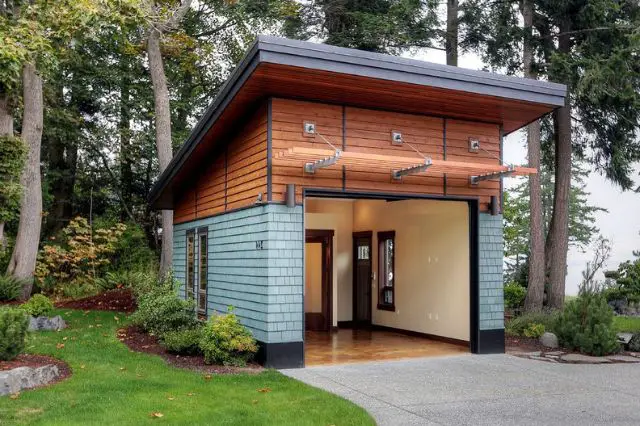Are you in need of some extra storage space for your outdoor equipment, gardening tools, or seasonal decorations? Look no further than a wood storage shed! These are not only practical but also add value to your property. However, building a new structure can have a significant impact on the environment if not done sustainably.
Luckily, there are many eco-friendly materials and practices that can be incorporated into your DIY wood shed project to minimize its environmental impact. Let’s explore some of these sustainable options below.
Choosing Sustainable Wood Materials
The first step in building sustainable wood sheds is to carefully consider the materials you will use. Opting for locally sourced, certified sustainable wood is an excellent choice. Certified sustainable wood comes from responsibly managed forests that promote biodiversity, protect water sources, and reduce the use of chemicals. Additionally, using locally sourced wood reduces transportation emissions and supports your local economy.
Another option to consider is reclaimed or salvaged wood. This type of wood has been used before for another purpose but can be repurposed into building materials. Reclaimed wood is not only environmentally friendly but also adds character and uniqueness to your shed. You can find reclaimed wood at salvage yards, demolition sites, or online.
Using Eco-Friendly Coatings
Traditional sealants and coatings used in construction are often made with harmful chemicals that can be released into the environment over time. To reduce the environmental impact of your DIY wood shed, consider using eco-friendly coatings such as natural plant oils, beeswax, or linseed oil. These options are non-toxic, biodegradable and can help protect your wood from weathering.
Incorporating Solar Power
Why not take your sustainable shed to the next level by incorporating solar power? Installing solar panels on your shed’s roof can provide clean, renewable energy to power your shed’s lighting or any other electrical needs. Solar panels are becoming increasingly affordable and can significantly reduce the environmental impact of your shed by reducing your reliance on traditional energy sources.
Implementing Rainwater Harvesting
Collecting rainwater is a simple yet effective way to reduce water consumption and minimize the environmental impact of your wood shed. You can install gutters on your shed’s roof to collect rainwater and store it in a barrel or tank for later use. This water can then be used for watering plants, washing tools or equipment, and even flushing toilets if you have a separate system installed.
Designing for Natural Light and Ventilation
Carefully planning the layout of your wood shed can also have a significant impact on its sustainability. To reduce your shed’s reliance on electricity, consider incorporating natural light and ventilation into the design. This can be achieved by installing windows, skylights, or using solar tubes to bring in natural light. For ventilation, consider adding vents or louvers that can allow for air circulation without the need for a fan or HVAC system.
Using Recycled and Upcycled Materials
Another way to reduce the environmental impact of your wood shed is by incorporating recycled or upcycled materials into your design. This can include using reclaimed windows, doors, or even salvaged bricks or concrete for the foundation. Not only does this help reduce waste, but it also adds a unique and creative touch to your shed’s design.
Minimizing Waste and Proper Disposal
Lastly, it is essential to consider waste reduction and proper disposal when building your wood shed. Minimizing waste can be achieved by carefully planning your project and only purchasing the necessary materials. Any leftover materials should be properly disposed of, recycled, or donated if possible.
Additionally, any hazardous waste such as paint or chemicals used in coatings should be disposed of correctly according to your local regulations. This helps prevent these harmful substances from entering the environment and polluting our water sources.
Conclusion
In conclusion, building sustainable DIY wood sheds is not only beneficial for the environment but also adds value to your property. By using eco-friendly materials and implementing sustainable practices, you can minimize your shed’s environmental impact and create a functional, beautiful space to store your belongings.
So why not consider incorporating these sustainable options into your next wood shed project? Your wallet and the planet will thank you. So, when are you starting your DIY wood shed project? Don’t forget to share your eco-friendly tips with others! With a little effort and creativity, we can all contribute towards a more sustainable future for our planet. Let’s get building!




Leave a Comment